 |
|
 |
| EARTH OBSERVING SYSTEMS |
 |
Current Earth observing systems include networks of satellite-borne and ground-based sensors – including ocean buoys, weather stations and
atmospheric radiosondes – that provide important parameters relating to land, ocean, and atmospheric processes. It has long been recognised that a single programme, agency, or country cannot satisfy the range of observations (many of which are global), needed to understand and monitor climate and other Earth System processes , and to assess the impact of human activities. The main Earth observing networks are, therefore, typically international collaborative programmes. They include:
World Weather Watch (WWW) of the World Meteorological Organisation (WMO) a unique achievement in international cooperation, providing a truly worldwide operational system to which virtually every country in the world contributes, every day of every year, for the common benefit of humankind.
The Global Observing System (GOS) of the WWW ensures that every country has all the information available to generate weather analyses, forecasts and warnings on a day-to-day basis. It includes around 10,000 stations on land, providing observations at least every three hours near the Earth’s surface. These include meteorological parameters such as atmospheric pressure, wind speed and direction, air temperature and relative humidity.
The most obvious benefits of the GOS are the safeguarding of life and property through the forecasting, detection and warning of severe weather phenomena such as local storms, tornadoes and tropical cyclones. GOS provides observational data for agricultural management, aviation safety, meteorology and climatology, including basic information on the key atmospheric surface variables – temperature and precipitation – that are central to global change.
The GOS also provides an international database of upper air observations which provide a record of vertical climate variations and are often combined with satellite data in analyses or ‘re-analysis’ to form a more comprehensive view of the atmosphere.
Global Atmosphere Watch (GAW) stations around the world supplement these observations with information on ozone, other greenhouse gases,
solar radiation, ultraviolet radiation and other atmospheric/meteorological parameters.
The Global Observing Systems
Within the last decade, the Global Observing System of the World Weather Watch has been complemented by the Global Ocean Observing System (GOOS) and the Global Terrestrial Observing System (GTOS). These produce a set of Global Observing Systems integrating in situ and remotely sensed data from a range of international, regional and national observing systems and networks, with each focusing on a major component of the Earth System. The Global Climate Observing System (GCOS) has also been initiated to integrate the observing needs for climate purposes.
GOOS: a permanent global system for observations, modelling and analysis of marine and ocean variables to support operational ocean services worldwide. GOOS provides accurate descriptions of the present state of the oceans, including living resources; continuous forecasts of the future conditions of the sea; and the basis for forecasts of climate change |
 |
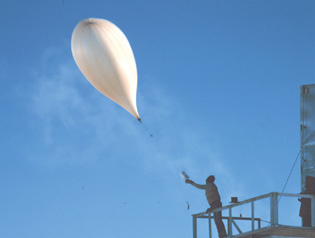
|
|
 |
GOOS is capitalising on existing ocean observing systems, such as:
— The TAO/TRITON array: comprises 70 moored buoys in the tropical Pacific Ocean. Since its completion in 1994, it has enabled real-time collection of high quality oceanographic and surface meteorological data for monitoring, forecasting, and understanding of climate swings associated with El Niño and La Niña. Data and graphic displays from the TAO/TRITON array are updated every day, and the data are freely available to the research community, the operational forecasting community and the general public.
— The Global Sea Level Observing System (GLOSS): an international programme coordinated by the Intergovernmental Oceanographic Commission (IOC) for the establishment of high quality global and regional sea level networks for application to climate, oceanographic and coastal sea level research. The main component of GLOSS is the ‘Global Core Network’ (GCN) of 290 sea level stations located around the world for monitoring long-term trends and accelerations in global sea level.
There are numerous other contributors to GOOS, including voluntary observing ships that provide measurements of upper ocean and meteorological
parameters, the Global Temperature and Salinity Profile Programme and the Global Coral Reef Monitoring Network. |
 |
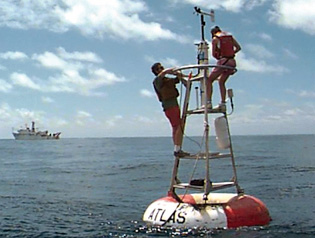
|
 |
The Joint WMO/IOC Technical Commission on Oceanography and Marine Meteorology (JCOMM) was established by these two UN bodies in 1999 in order to ensure that all the elements necessary for GOOS are put in place and adequately funded. The system will be end-to-end, from maintaining observing systems of in situ, air- and space-based instrumentation to data collection and archiving, standards and quality control, and the real-time delivery of data and services to all users. The goals of JCOMM are to identify and coordinate all of the necessary subsystems as a coherent whole and to ensure that nations are aware of, and commit to, the necessary funding for the full system.
GTOS: a programme for observations, modelling, and analysis of terrestrial ecosystems to support sustainable development. The Global Terrestrial Observing System (GTOS) facilitates access to information on terrestrial ecosystems so that researchers and policy makers can detect and manage global and regional environmental change. |
|
 |
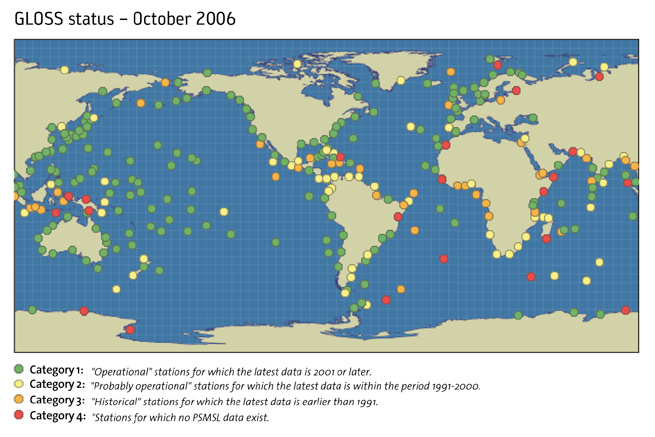 |
 |
To achieve this GTOS is working towards the establishment of a ‘system of networks’ formed by linking existing terrestrial monitoring sites and networks, as well as planned satellite remote sensing systems. Thematic networks have been established for ecology, glaciers and permafrost. A hydrology network is in progress.
Since the sustainable development of forest resources is regarded as one of the most pressing environmental issues of our time, GTOS has established a panel on Global Observations of Forest Cover and Land Cover Dynamics (GOFC-GOLD). This panel aims to improve the quality and availability of observations of forests at regional and global scales and to produce useful, timely and validated information products from these data for a wide variety of users.
The Global Terrestrial Network (GT-Net) links the world’s terrestrial research networks together. It serves as a framework for network managers to explore areas of common interest, harmonise research efforts and share data, information and experience.
|
 |
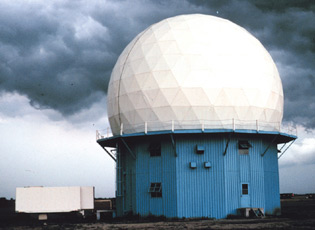 |
 |
| |
|
 |
GCOS: The Global Climate Observing System (GCOS) Steering Committee was established in 1992 to ensure that the observations and information needed to address climate-related issues are obtained and made available to all potential users. It is co-sponsored by WMO, the Intergovernmental Oceanographic Commission (IOC), the United Nations Environment Programme (UNEP) and the International Council for Science (ICSU). The GCOS Secretariat and the Steering Committee play an advisory role and work in partnership with the domain-based observing systems to advise on the climate components of those observing systems.
These climate components form a Global Climate Observing System that is intended to be a long-term, user-driven operational system that will be capable of providing the comprehensive observations required for monitoring the climate system, for detecting and attributing climate change, and for assessing the impacts of climate variability and climatology, including the study of global change. More details on this important role for GCOS may be found below.
|
 |
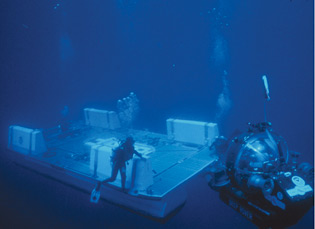 |
 |
|
|
 |
| |
|





